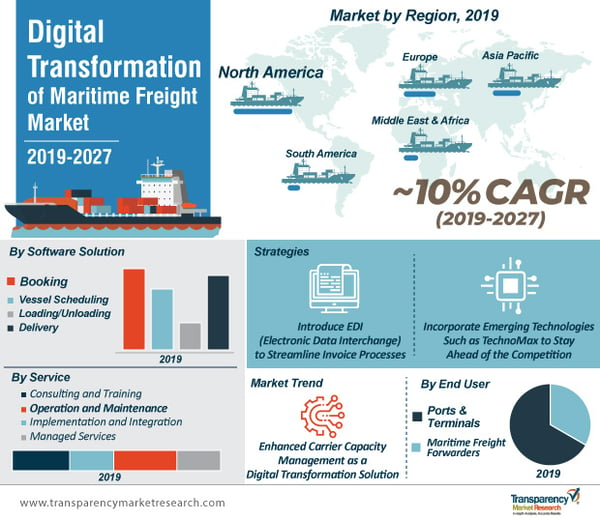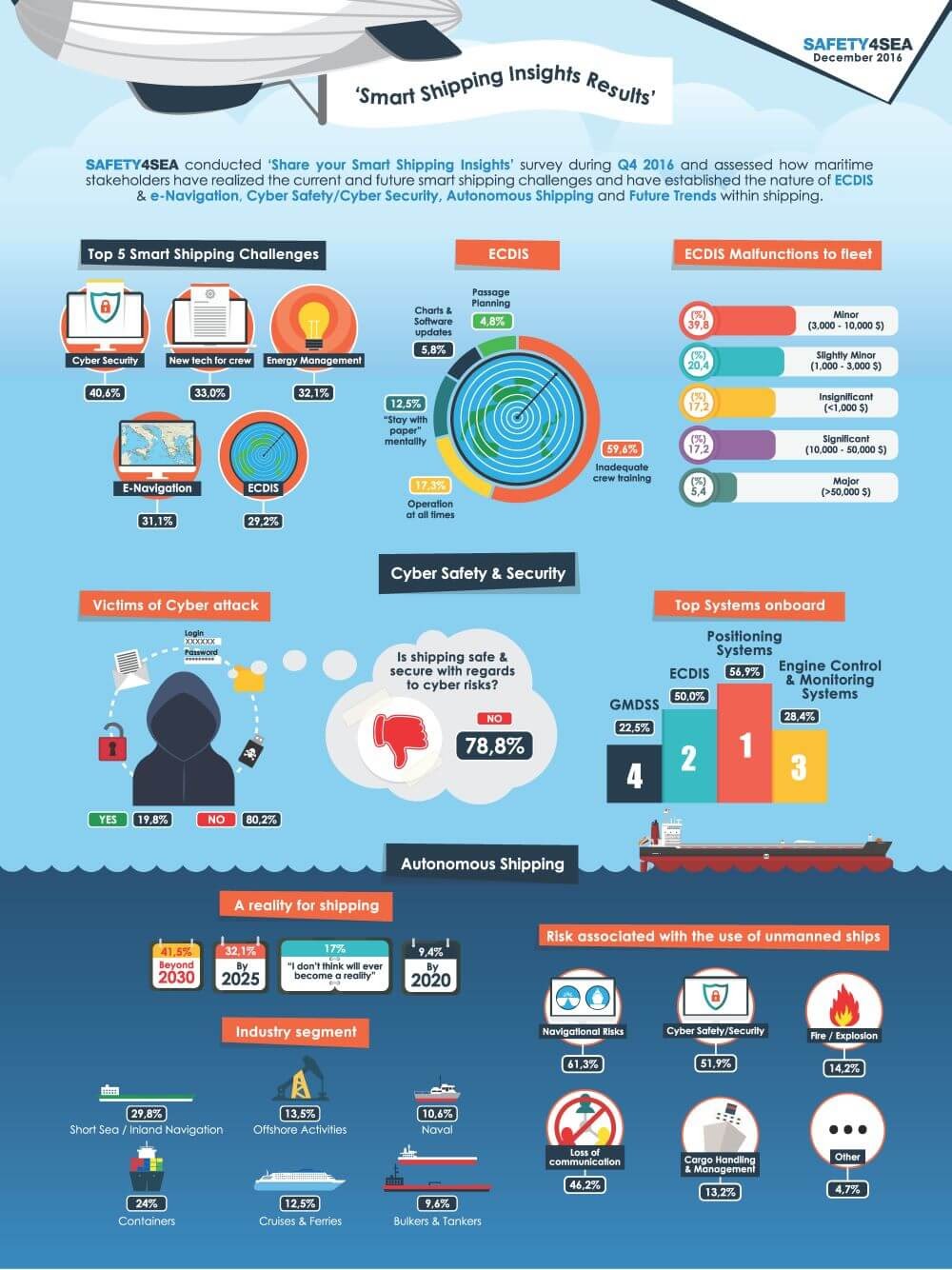
There’s no denying that the ongoing demand for shipping organisations to respond to overcapacity, environment responsibility and profit margins with streamlined services that afford integrated and end-to-end logistics is increasing.
Executives in the maritime industry have been pushed to re-think their traditional approaches to managing their fleets and operational capacity and digitisation has proven to be absolutely essential to making this happen.
Those that aren’t embracing digital transformation are being left behind, and those that are; they’re reaping the benefits of efficiency and an improved and affordable service for their customers.
If you’re looking to better understand digital transformation in the maritime industry and revolutionise the way your business approaches shipping, we’ve done all of the hard yards on your behalf. These are our top picks for the most useful and informative free articles and papers that explain digitalisation in shipping and the profound effect it has had.
We’d recommend giving the following a read.
1. BCG: Digitalisation Wave In The Shipping Industry
This is a relatively short, yet incredibly informative article that covers the basics on how digitalisation has impacted the shipping industry thus far. It quite clearly breaks down the roll-out of digitalisation of shipping into three sections:
- Developing new business models and offerings
From taking advantage of online booking platforms to e-commerce and cargo management systems. - Digitalising the core business
From blockchain tech and revenue management analytics to fleet monitoring systems. - Build a robust internal digital foundation
A breakdown of the ways that internal-facing processes (agile and systems) can transform a business.
But perhaps the most useful section of this article is the two videos included, where Twill Logistics CEO Troels Støvring covers what the shipping industry could learn from the digitalisation of other industries, and BCG’s Camille Egloff, the leader of the firm’s shipping sector unpacks the essential and necessary need to leverage technology to improve container shipping at scale.
An excellent snapshot of digitalisation in shipping.
2. Transparency Market Research: Digital Transformation of Maritime Freight Market
In response to the growth currently experienced by the maritime industry, Transparency Market Research has put together a full 202-page report covering the rise in digitisation of sea freight booking through automation and cloud-based technologies is showing unprecedented growth in the digital transformation of maritime freight market.
Unfortunately, as this is a full paper it requires payment to download, however, you can access a preview of the report including infographics which will give you a valuable snapshot of the key facts and messages. For example, cloud-based software solutions are poised to hold ~60% of the digital transformation of maritime freight market share by 2027; cloud-based solutions and cloud management tools are gaining popularity with their cost-saving benefits for stakeholders in the maritime supply space, thus triggering growth in the digital transformation of maritime freight.

We’d highly recommend taking a look at this one if you’re interested in:
- The key challenges faced by the digital transformation of maritime freight market players
- A snapshot of the Asia Pacific Digital Transformation of Maritime Freight Market
- The Definition of Digital Transformation of Maritime Freight Market
3. SAFETY4SEA: Survey Reveals Industry’s Smart Side
With the unique perspective of conveying the ‘perception’ of the industry towards the transition into the ‘smart era’ of digitalisation, this SAFETY4SEA survey covers the advantages and safety risks of ECDIS & e-Navigation, Cyber Safety/ Cyber Security, Autonomous Shipping and Future Trends.
As put by the Managing Editor of SAFETY4SEA:
“The survey identifies critical areas that must be addressed with respect to the digitization of shipping. The start has already been made and the pathway to smart era does involve many challenges. In any case, industry has to be cautious to assure safety of life, assets and environment are adequately addressed.”
Perhaps the most valuable insights covered are the analysis of the most vulnerable systems onboard ships to cyber threats, identifying positioning systems, ECDIS, Engine Control and Monitoring Systems as the top three areas at risk.
After viewing these results, there’s no denying that smart shipping and automation will enhance shipping operations for years to come, but there’s room for improvement when it comes to cybersecurity and creating processes around reporting risks and attacks.

4. Taylor Wessing: Digital Transformation of the Maritime Industry
The shipping industry is undoubtedly experiencing digital change at an unprecedented rate, with some players paving the way, and other adapting at a slightly slower pace. This Taylor Wessing articles covers the basics of change, from IoT supported route and resource planning to crewless ships and unmanned vessels, to the training, education and management of a workforce that has been challenged with adapting to these changes.
“Almost any aspect of the maritime sector is currently undergoing far-reaching changes at an unprecedented pace”
The real point of difference in this resource, however, is the breakdown of the specific challenges that the maritime industry faces in a broader sense as a result of digitalisation. For example, how to adapt a highly regulated market to constantly evolving business models and technology changes. The article also touches on data use and data ownership (an area we’re particularly mindful of), and liability issues surrounding automated systems when something goes wrong.
5. Lloyd’s List: Shipping chiefs urged to take lead in digital transformation
 Based on a Wärtsilä sponsored webinar run by maritime industry leaders, this article covers the role that leadership plays in digitisation and urges shipping chiefs to acknowledge and take the next steps towards digitalisation.
Based on a Wärtsilä sponsored webinar run by maritime industry leaders, this article covers the role that leadership plays in digitisation and urges shipping chiefs to acknowledge and take the next steps towards digitalisation.
The content itself focuses on the business opportunity that digitalisation affords, rather than the technology itself, as well as how leaders can use their extensive knowledge of the industry and their business to leverage these opportunities.
Interestingly, Wärtsilä Marine’s Business Development Director Mauro Sacchi points out that “Many executives are uncomfortable with technical jargon [such as the term ‘bandwidth’] because they didn’t grow up with it,” which is why it’s so key to have these discussions and bring digital transformation to the forefront
This is a highly insightful article that dives into the leadership element of digital transformation - we’d highly recommend reading.




